6 Types of Light Bulbs
-
Jana Blagojevic
- Last updated:
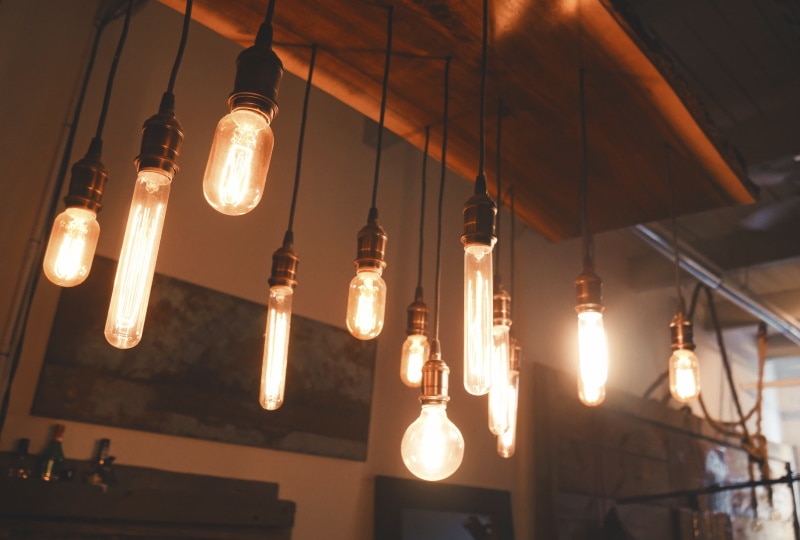
When looking for ideal lighting to complete your living room or bedroom aesthetics, you need to know your search will be more complex than you intended. Many factors can influence that dimmed light, which creates a perfect, warm and cozy atmosphere in your home. Since there are many light bulb types on the market, knowing exactly which is suitable for your home can be a huge advantage.
The article below shows you the most popular types of light bulbs, their purposes, and their main characteristics. After reading this article carefully, you’ll have all the information necessary to determine the kind of light your space needs to feel more soothing and welcoming.
The 6 Types of Light Bulbs
1. Light-Emitting Diode (LED)
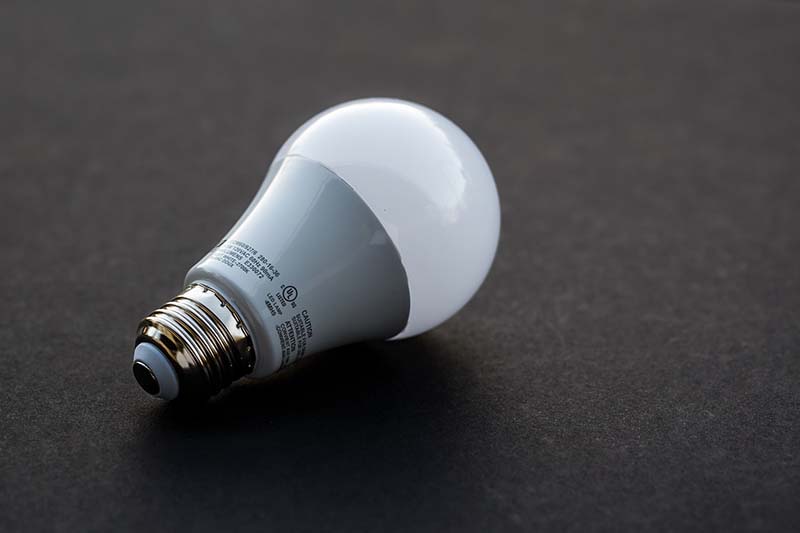
- Usually made from recycled materials
- Tend to give off a blue, cool light, making them unsuitable for relaxing rooms
- Never heat up
- Last for more than a decade (50,000 hours)
The most energy-efficient light bulb currently on the market is the LED light. LED lights are energy-efficient because they don’t need as much energy to produce a bright light and have a very long life span—often over a decade. They work much differently than incandescent or other bulb types, which is why they never heat up as much. The electricity flows through the semiconductor in the LED bulb, and when it reaches a nonconductive region, it produces light. You can mostly find them in floor lamps and other directional lighting, outdoor lighting, and nightlights.
2. Incandescent Light Bulb
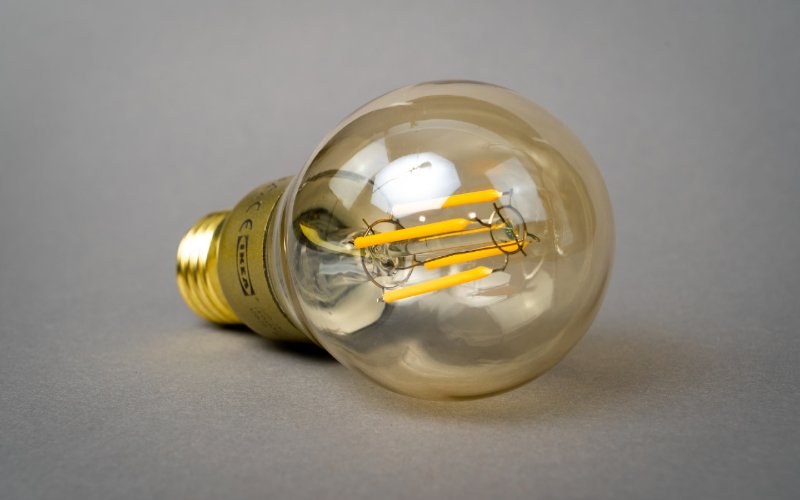
- Warm, dimmable light
- Affordable
- They have a lifespan of about a year
- They tend to heat up quickly
- Not as energy-efficient
- A variety of sizes and voltages are available
The incandescent light bulb is considered to be the original bulb, dating back to the 19th century. The electricity heats the metal filament until it glows. This filament is packed in a glass container with inert gas, primarily to prolong the life of this type of bulb and prevent oxidation. There are many pros and cons to using incandescent light bulbs. Their main issue is the lack of efficiency that LED bulbs have, although they might still be the most commonly used bulb in most households. You can find them in most lampshades, chandeliers in living rooms and bedrooms, home offices, and wall sconces.
3. Halogen Bulbs
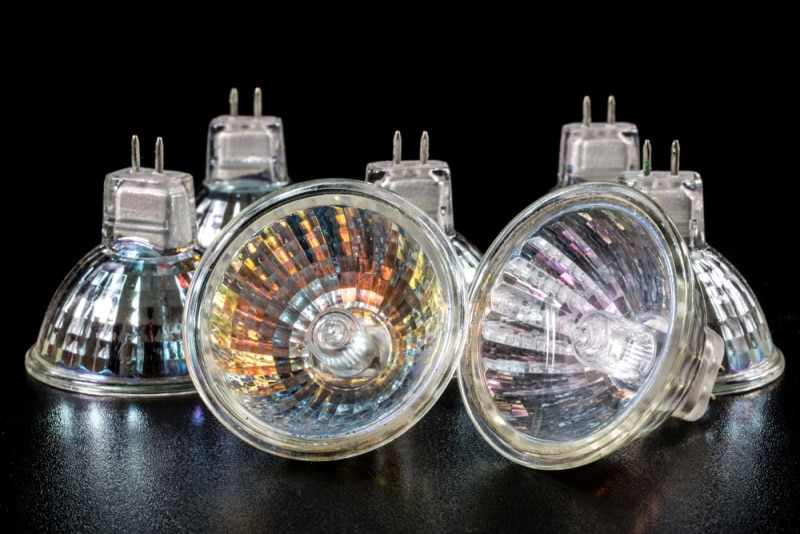
- They let out a natural white light
- Affordable
- It tends to get very hot
- Moderately energy-efficient, although not as much as LED lights
Halogen light bulbs function similarly to incandescent bulbs; their glass bulbs are filled with gas and a tungsten filament which produces light once electricity is introduced. While incandescent bulbs usually use argon gas, halogen bulbs use iodine or bromine, or both, which is meant to prolong the bulb’s life. Halogen bulbs are excellent for spotlighting and can often be seen in movie productions and theatres. These bulbs are usually very affordable and let out neutral white light.
They are dimmable, like an incandescent bulb; however, they could be more energy-efficient. They are mostly used in kitchens, indoor or outdoor areas, and lighting recessed lighting.
4. Smart Light Bulbs
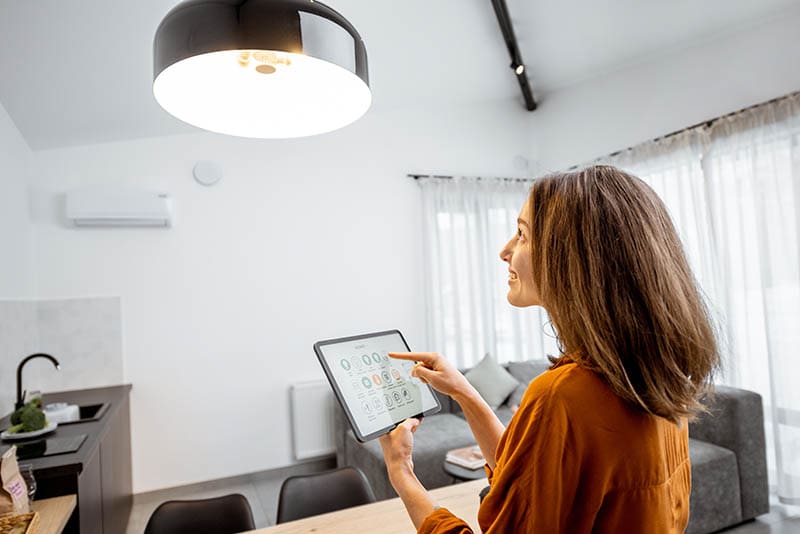
- LED lights with more features
- They are connected to an internet connection or Bluetooth
- They can be controlled remotely through smart devices
- More expensive than regular light bulbs
With technologies rising and becoming more advanced, almost anything in your household can be “smart”. The newest innovation is the smart light bulbs, usually LED lights with additional features available. These lights benefit from a Wi-Fi connection and the ability to control the brightness remotely. This way, as a user, you can control, customize and even create a schedule for your lighting system. Since these light bulbs are more expensive than regular ones, they are less common in residential properties.
5. Fluorescent Light Bulbs

- They often come in long, tubular forms
- They have a long lifespan
- The uncomfortable white light makes them unsuitable for homes and relaxing spaces
Fluorescent light bulbs are much different in the way they work from any other type of bulb. They consist of a glass tube coated with phosphor powder and a small amount of mercury filled with inert gas. Once the electricity begins flowing through the tube, the mercury ionizes and emits UV light. The phosphor powder absorbs this UV light and emits a strong white light.
Fluorescent light bulbs are easily recognizable by their intense light, which is uncomfortable to look at. These bulbs are usually used in offices and parking garages.
6. Compact Fluorescent Bulbs
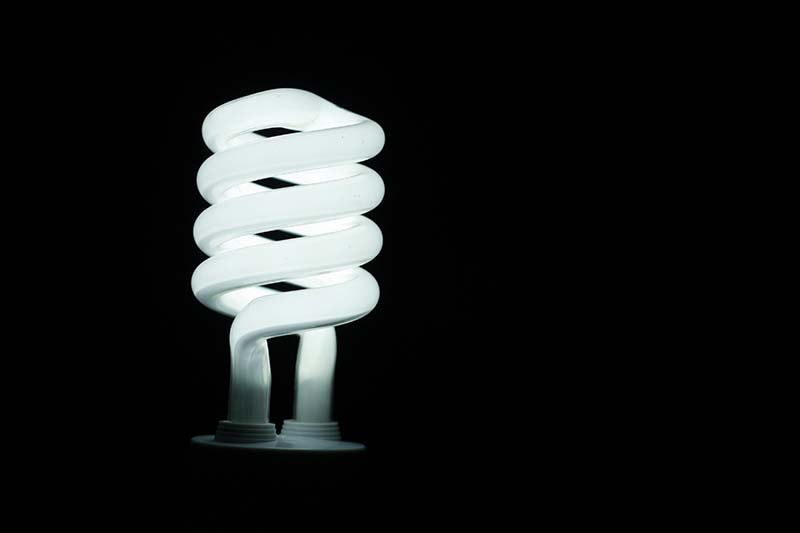
- They cannot be dimmed
- They contain small amounts of mercury
- They come in a variety of sizes and colors
- More affordable and energy-efficient than incandescent light bulbs
Compact Fluorescent Bulbs, or CFL bulbs, are more energy-efficient than incandescent bulbs. They can be easily recognized in offices and other large spaces and are distinctive by their spiral shape. They are also used for table lamps and other places where they need to be on for extended periods. These bulbs contain small amounts of mercury, making them toxic when broken. They are also more expensive than incandescent lights, although they last much longer.
Different Light Bulbs by Shape
Other than the most important division of light bulbs by their type, they can also be divided into several distinctive shapes.
- Standard
- Tube
- Spiral
- Floodlight
- Globe
- Candle
- Capsule
- 2D
- Pear

Types of Light Bulb Color Temperatures
Depending on the type of light bulbs can emit, we can separate them into several groups. These groups can be fundamental when choosing an ideal light for a particular room or occasion. Warm lights are generally more oriented for relaxed rooms such as living rooms or bedrooms, while cold lights are mostly used in bathrooms, offices, or outdoor areas.
- Candlelight: These lights have a gorgeous dim glow, ideal for small areas for relaxing, reading, or resting. This type of light is best used for ambiance and calming aesthetics.
- Warm white: These light bulbs also give a soft and warm glow, and rooms that use this light are very comfortable. They are used in lampshades and ceiling lights in living rooms, dining rooms, and bedrooms.
- Neutral white: Neutral white light gives off a cool atmosphere, although it is not as hard on the eyes. Since it is so bright and vibrant, it is mostly used in garages, offices, or kitchens.
- Blue: Blue light bulbs are very easy to recognize because of their uncomfortable colors. They give out sharp, cold lighting, which is suitable for only those areas where plenty of light is needed. You can find them in garages, workshops, dark home offices, or display areas.
Conclusion
With the various possibilities of light bulbs on the market, you can now pick out the exact type of lighting each room in your house needs. Whether you are looking to give your garage or working area an extra spark of brightness or to give your office a soothing effect for increasing productivity, we hope this article will help guide your decision.
Featured Image Credit: Piqsels
Contents
